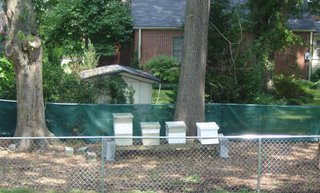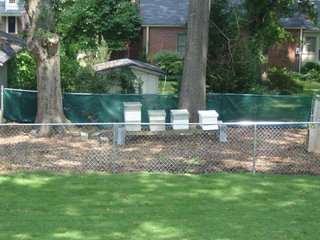Honey Helps Problem Wounds
A household remedy millennia old is being reinstated: honey helps the treatment of some wounds better than the most modern antibiotics. For several years now medical experts from the University of Bonn have been clocking up largely positive experience with what is known as medihoney. Even chronic wounds infected with multi-resistant bacteria often healed within a few weeks. In conjunction with colleagues from Düsseldorf, Homburg and Berlin they now want to test the experience gained in a large-scale study, as objective data on the curative properties of honey are thin on the ground.
The fact that honey can help wounds to heal is something that was known to the Ancient Egyptians several thousand years ago. And in the last two world wars poultices with honey were used to assist the healing process in soldiers' wounds. However, the rise of the new antibiotics replaced this household remedy. "In hospitals today we are faced with germs which are resistant to almost all the current anti-biotics," Dr. Arne Simon explains. "As a result, the medical use of honey is becoming attractive again for the treatment of wounds."
Dr. Simon works on the cancer ward of the Bonn University Children's Clinic. As far as the treatment of wounds is concerned, his young patients form part of a high-risk group: the medication used to treat cancer known as cytostatics not only slows down the reproduction of malignant cells, but also impairs the healing process of wounds. "Normally a skin injury heals in a week, with our children it often takes a month or more," he says. Moreover, children with leukaemia have a weakened immune system. If a germ enters their bloodstream via a wound, the result may be a fatal case of blood poisoning.
For several years now Bonn paediatricians have been pioneering the use in Germany of medihoney in treating wounds. Medihoney bears the CE seal for medical products; its quality is regularly tested. The success is astonishing: "Dead tissue is rejected faster, and the wounds heals more rapidly," Kai Sofka, wound specialist at the University Children's Clinic, emphasises. "What is more, changing dressings is less painful, since the poultices are easier to remove without damaging the newly formed layers of skin." Some wounds often smell unpleasant -- an enormous strain on the patient. Yet honey helps here too by reducing the smell. "Even wounds which consistently refused to heal for years can, in our experience, be brought under control with medihoney -- and this frequently happens within a few weeks," Kai Sofka says.
In the meantime two dozen hospitals in Germany are using honey in their treatment of wounds. Despite all the success there have hitherto been very few reliable clinical studies of its effectiveness. In conjunction with colleagues from Düsseldorf, Homburg and Berlin, the Bonn medical staff now want to remedy this. With the Woundpecker Data Bank, which they have developed themselves, they will be recording and evalu-ating over 100 courses of disease over the next few months. The next step planned is comparative studies with other therapeutic methods such as the very expensive cationic silver dressings. "These too are an effective anti-bacterial method," says Dr. Arne Simon. "However, it is not yet clear whether the silver released from some dressings may lead to side-effects among children."
Effective bacteria killer
It has already been proved that medihoney even puts paid to multi-resistant germs such as MRSA. In this respect medihoney is neck and neck in the race to beat the antibiotic mupirocin, currently the local MRSA antibiotic of choice. This is shown by a study recently published by researchers in Australia. In one point medihoney was even superior to its rival: the bacteria did not develop any resistance to the natural product during the course of treatment.
It is also known today why honey has an antiseptic effect: when producing honey, bees add an enzyme called glucose-oxidase. This enzyme ensures that small amounts of hydrogen peroxide, an effective antiseptic, are constantly being formed from the sugar in the honey. The advantage over the hydrogen peroxide from the chemist's is that small concentrations are sufficient to kill the germs, as it is constantly being produced. As a rule much larger quantities of hydrogen peroxide would have to be used, as hydrogen peroxide loses its potency over time. However, in large concentrations it not only damages the bacteria, but also the skin cells.
Furthermore, medihoney consists of two different types of honey: one which forms a comparatively large amount of hydrogen peroxide, and another known as "lepto-spermum honey". Leptospermum is a species of tree which occurs in New Zealand and Australia. Honey from these trees has a particularly strong anti-bacterial effect, even in a 10% dilution. "It is not yet known exactly why this is," Dr. Arne Simon says. "Probably it is a mix of phenol-type substances which come from the plant and make life particularly difficult for the bacteria in the wound."
From: Science Daily
http://www.sciencedaily.com/releases/2006/07/060727090308.htm











